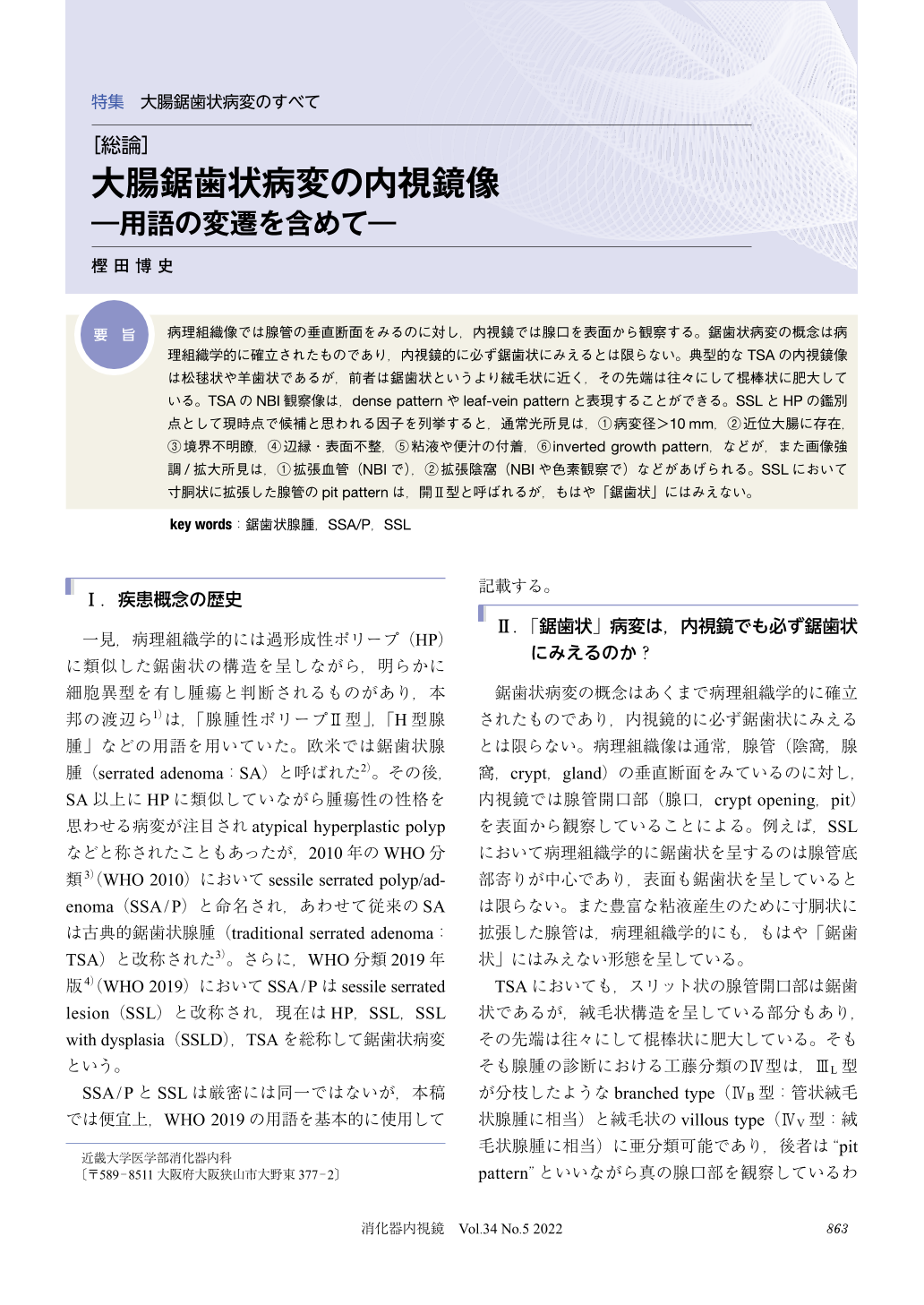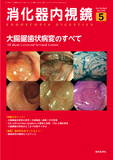Japanese
English
- 有料閲覧
- Abstract 文献概要
- 1ページ目 Look Inside
- 参考文献 Reference
要 旨
病理組織像では腺管の垂直断面をみるのに対し,内視鏡では腺口を表面から観察する。鋸歯状病変の概念は病理組織学的に確立されたものであり,内視鏡的に必ず鋸歯状にみえるとは限らない。典型的なTSAの内視鏡像は松毬状や羊歯状であるが,前者は鋸歯状というより絨毛状に近く,その先端は往々にして棍棒状に肥大している。TSAのNBI観察像は,dense patternやleaf-vein patternと表現することができる。SSLとHPの鑑別点として現時点で候補と思われる因子を列挙すると,通常光所見は,①病変径>10mm,②近位大腸に存在,③境界不明瞭,④辺縁・表面不整,⑤粘液や便汁の付着,⑥inverted growth pattern,などが,また画像強調/拡大所見は,①拡張血管(NBIで),②拡張陰窩(NBIや色素観察で)などがあげられる。SSLにおいて寸胴状に拡張した腺管のpit patternは,開Ⅱ型と呼ばれるが,もはや「鋸歯状」にはみえない。
Endoscopically, colorectal polyps are observed only from the surface in contrast to the vertically-sectioned histopathological slices. The concept of “serrated lesions” was established histopathologically and therefore they do not always look “serrated” endoscopically. Typical patterns of traditional serrated adenomas (TSAs) are pinecone-like and fern-like; the former is similar to villous pattern, but the tips of “villi” are often swollen and look more like clubs. Narrow-band images of TSAs can be described as dense pattern or leaf-vein pattern. Characteristics that may discriminate sessile serrated lesion (SSL) from hyperplastic polyp (HP) are 1) lesion size ≥10 mm, 2) proximal location, 3) indistinctive borders, 4) irregular shape, cloud-like surface, 5) mucus cap, rim of debris, 6) inverted growth pattern, 7) dilated vessels in NBI, 8) dilated crypts in NBI of chromoendoscopy. Dilated crypts which are called “type II-O pits look roundish and not “serrated” anymore.

© tokyo-igakusha.co.jp. All right reserved.


